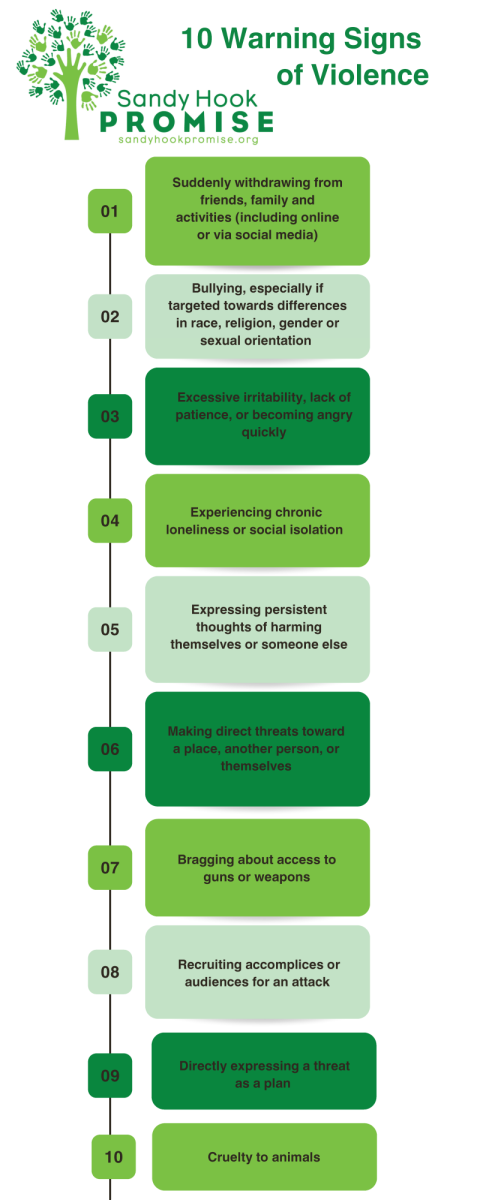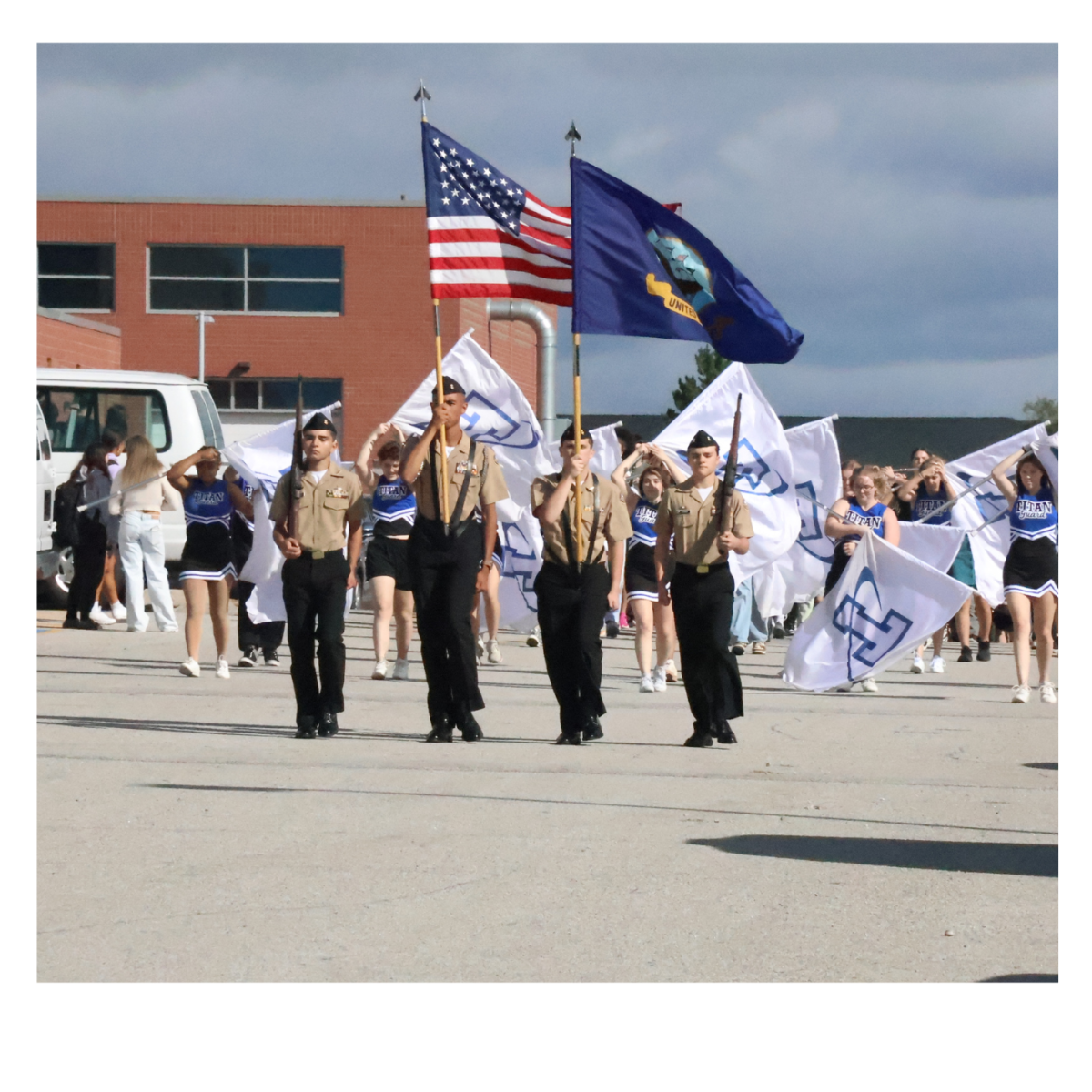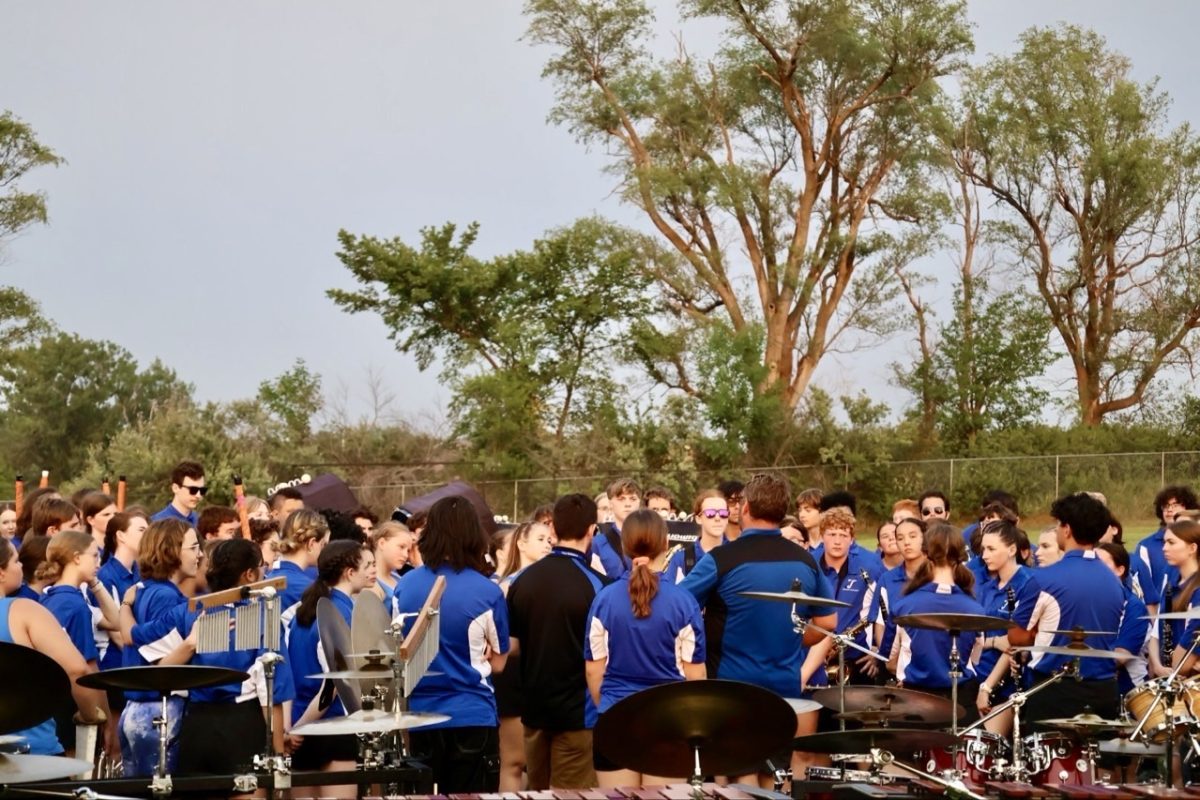Sandy Hook Promise is a national nonprofit organization founded and led by several family members whose loved ones were killed in a mass shooting at Sandy Hook Elementary School on Dec. 14, 2012, in Newtown, Connecticut. Among the youngest of the 26 victims were six first-graders who should now be seniors in high school.
Sandy Hook Promise claims its organization has saved 554 lives with crisis interventions, prevented 15 planned school shootings, and stopped 218 other acts of violence with the help of 21 million participants nationwide. The group’s stated mission is to “educate and empower youth and adults to prevent violence in schools, homes, and communities.”
The Sandy Hook tragedy not only created an organization, it also opened the eyes of school districts about what could be done to keep schools safe.
“We constantly collaborate with peers and participate in professional development on the topic of safety,” Papillion-La Vista South High School Principal Jeff Spilker said. “We want to be doing everything we can to keep our students safe.”
 Papio South and other schools in the district follow Standard Response Protocols from ILoveYouGuys.org. This system helps ensure that students, staff and teachers respond appropriately to crisis situations. The SRP tips were created through research-based best practices of school administrators, psychologists, public-space safety experts, families, and first responders.
Papio South and other schools in the district follow Standard Response Protocols from ILoveYouGuys.org. This system helps ensure that students, staff and teachers respond appropriately to crisis situations. The SRP tips were created through research-based best practices of school administrators, psychologists, public-space safety experts, families, and first responders.
Like Sandy Hook Promise’s “Say Something” campaign, Papio South promotes the role of bystanders in reporting potential threats.
“I would say that our students take our philosophy of ‘See something, say something’ very seriously,” Spilker said. “We get many reports from students and community members if they see something concerning. We all share in the ownership of school safety.”
Sarpy County’s TIPS Reporting website provides a 24-hour resource for anyone wanting to report concerning behaviors, threats to harm, suicidal thoughts, as well as information about drugs, weapons, or other factors that might be harmful to the community, especially schools.
School Resource Officer Andy Mahan said communication plays an essential role in school safety.
“I can’t stress how important communication is to preventing most harmful incidents in school,” Mahan said.
“If any student has concerns about an individual who may pose a threat, it’s very important those concerns be shared with a staff member: principal, counselor, or any trusted adult, including myself.”
“As a Papillion Police Officer, the school admin team and I must take every threat seriously and investigate to determine whether the threat is valid or not,” Mahan said.
“Although my No.1 priority is the safety of the students and staff, the role of an SRO is much more. My door is always open for students.”
Assistant Principal Jessica Prusha identified relationship-building as another key to the school’s culture of safety.
“I think probably one of the things that we do really well, is that we just know, we know our kids,” Prusha said. “We also do a really great job, I feel like, of being able to identify if someone’s not feeling themselves. I feel like our teachers, our counselors, our support staff, our administration, I just feel like we do a really good job at not only connecting with kids but also knowing like, ‘Hey, do you need some extra support right now?’”
Prusha speaks from experience, having been a staff member at Millard South High School in January 2011 when two school administrators were shot and one was killed.
“Probably the biggest situation I’ve been a part of was the Millard South shooting,” Prusha said. “We had a situation where a student came back into the building after being suspended and was targeting staff members.”
Prusha said that shaped her awareness and response to potentially risky situations.
“You’re always looking for ways to improve safety, you know,” Prusha said,
“And I think a lot of times we will work on that together as a team, but I think also we rely a lot on those other schools and buildings around us.”
“When it comes to these big safety issues, we’ll have conversations just as a Metro team like, ‘Hey, what’s going well at your school? What’s something, you know, that you see that we could improve on here at our school?’ And so we do a lot of sharing of ideas,” Prusha said.
From the very start, Papio South was built with safety in mind, having been designed not long after the 1999 Columbine High School attack in Littleton, Colorado. The building was designed to close off main areas such as the gym, cafe and theater, in addition to classrooms, if needed.
“We have long hallways with great lines of sight,” Spilker noted. “We also have limited commons spaces for students to be gathered outside of classes.”
Additional safety measures have been added in recent years with the help of bond funding.
“The recent bond issues that have passed have made our school a safer place,” Spilker said, “From camera upgrades to double locked doors, to future planned security measures with door alarms and glass updates.”
The administrators regularly participate in professional development on the topic of safety.
“I’ve also been involved in other situations where we’ve had students within a school building try to harm themselves or try to harm others,” Prusha said. “And so I just, unfortunately, I’ve been in several unique situations that have kind of prepared me for the position I’m in today.”
As Sandy Hook Promise marks another heart-wrenching anniversary for those who lost loved ones, it also looks ahead to creating a future where all members of a community are working together to keep students and staff safe at school.








